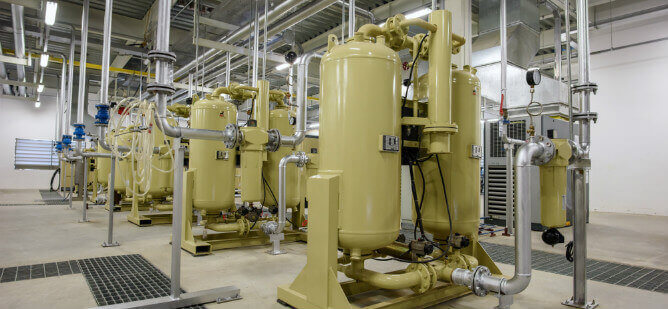The Impact of Compressed Air Piping on Equipment Longevity
Compressed air systems are essential in many industrial and manufacturing environments, providing the power needed for a wide range of tools and equipment. While much attention is often given to the compressors themselves, the role of compressed air piping is equally critical in determining the overall performance and longevity of the equipment. Proper design, installation, and maintenance of compressed air piping can significantly impact the lifespan of connected machinery, reducing downtime and costly repairs. One of the most important ways compressed air piping affects equipment longevity is by ensuring consistent air quality and pressure. Poorly designed or deteriorating pipes can introduce contaminants such as rust, moisture, and oil into the airflow. These impurities can damage pneumatic tools, valves, and actuators by causing corrosion, clogging, and premature wear. For example, moisture buildup within the piping can lead to rust formation, which can then enter equipment components, accelerating degradation and causing malfunctions. Maintaining clean, dry, and properly sized piping helps prevent these issues, enabling equipment to operate under optimal conditions and reducing the risk of breakdowns. Another key factor is pressure stability.

Compressed air tools and equipment rely on a steady and adequate air pressure to function efficiently. If the piping system is undersized, has excessive bends, or contains leaks, the pressure can drop significantly by the time the air reaches the tool. This pressure drop forces equipment to work harder, which not only reduces productivity but also stresses mechanical parts, leading to faster wear and shorter service life and . Conversely, properly designed piping that minimizes pressure losses and leakage ensures that tools receive the correct pressure, improving their operational efficiency and extending their working life. The material and layout of compressed air piping also influence equipment longevity and check https://www.constructionplacements.com/compressed-air-nitrogen-gas-piping-sustainable-industrial-growth/. Using high-quality materials such as aluminum, stainless steel, or coated steel piping can resist corrosion and withstand the demands of industrial environments. Additionally, a well-thought-out layout minimizes unnecessary bends, joints, and connections, which are potential points of failure or leakage. Regular inspection and maintenance of piping to detect and repair leaks, corrosion, or damage further contribute to the system’s reliability. Neglecting these aspects can lead to frequent air pressure fluctuations and contamination, ultimately harming the pneumatic equipment connected to the system.
Furthermore, the thermal characteristics of compressed air piping affect equipment performance and lifespan. Compressed air heats up during compression and cools as it travels through the piping. If the piping lacks proper insulation or ventilation, temperature variations can cause condensation within the system, again leading to moisture-related problems. Consistent temperatures within the piping prevent condensation and protect equipment from corrosion and malfunction. Compressed air piping plays a crucial role in safeguarding the longevity of pneumatic equipment. From maintaining clean, dry air and stable pressure to using quality materials and ensuring proper system layout, the piping system directly influences the health and durability of connected machinery. Investing in well-designed compressed air piping and committing to regular maintenance not only enhances equipment performance but also reduces operational costs by minimizing downtime and repair needs. For industries that rely heavily on compressed air, understanding and optimizing the piping infrastructure is a vital step toward achieving long-term equipment reliability and efficiency.